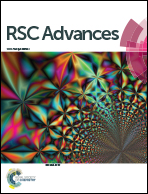Ferromagnetism in cubic InN:Mn nanocrystals induced by surface Mn atoms
Abstract
Cubic Mn-doped InN magnetic nanocrystals are prepared by nitriding In2O3:Mn nanocrystals. Structural and elemental analyses indicate that Mn is successfully incorporated into InN nanocrystals with no secondary phase or clusters. Ferromagnetism (FM) is observed in the InN:Mn nanocrystals at Tc = 50 K. Results reveal that FM in the nanocrystals originates from surface Mn atoms instead of core counterparts that substitute In atoms. The experimental observations are consistent with theoretical calculations.


 Please wait while we load your content...
Please wait while we load your content...